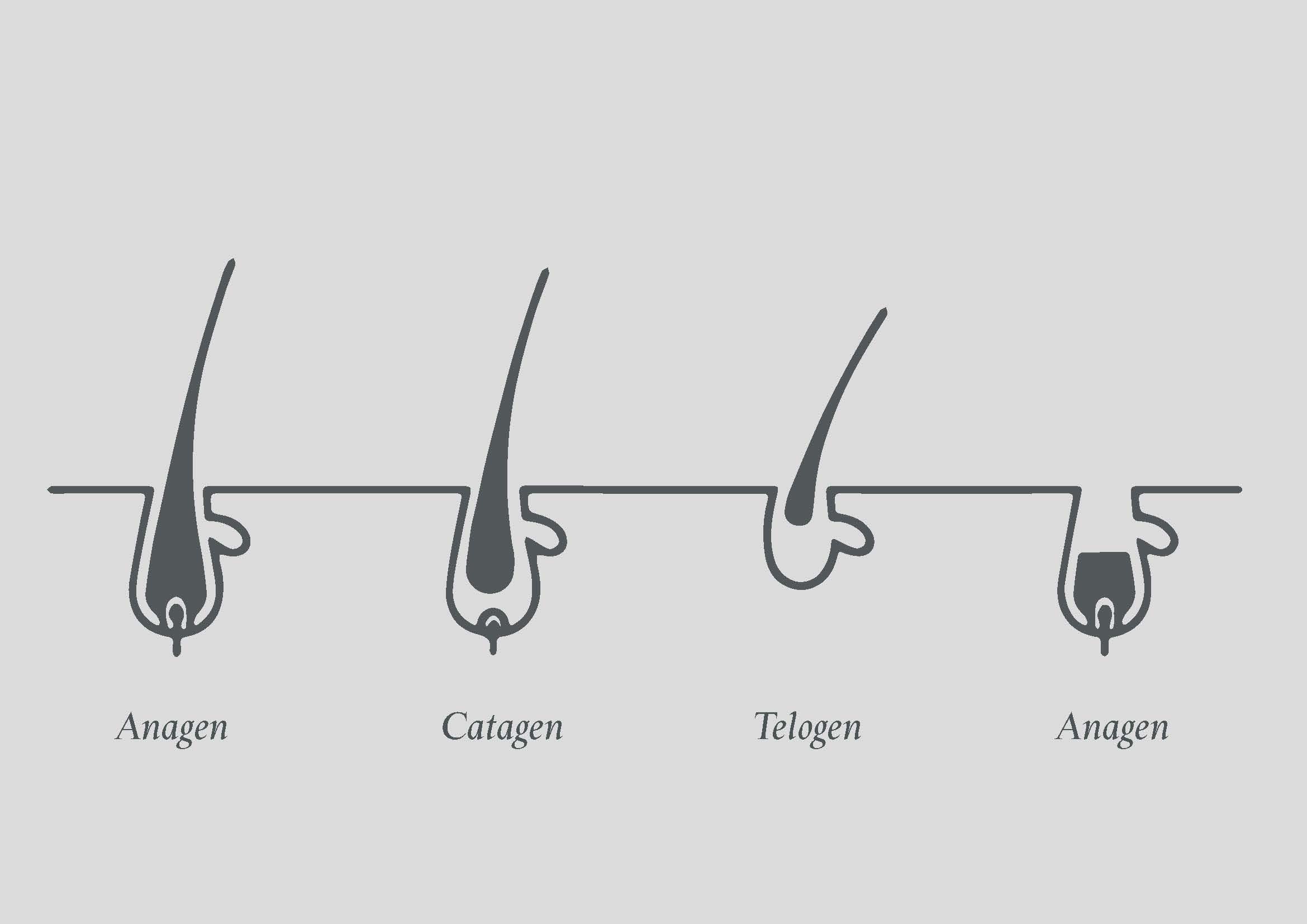 Many women find their hair loses volume and length around menopause; hair can also become brittle, fragile and break more easily. Some women also notice hair thinning and shedding - particularly around the hairline and crown – known as female pattern hair loss (FPHL).
Many women find their hair loses volume and length around menopause; hair can also become brittle, fragile and break more easily. Some women also notice hair thinning and shedding - particularly around the hairline and crown – known as female pattern hair loss (FPHL).
Common signs of menopausal hair thinning:
Ponytail is thinner
Hair not growing as long as it used to
Parting is wider and scalp is more visible around the crown
Recession and/or thinning at temples
Reduced thickness and length of each strand
These changes can be really stressful since our hair is a very important aspect of our identity. Other unwelcome changes to our appearance may also be happening around the same time, leading to further distress…
 The hair growth cycle consists of three distinct stages:
The hair growth cycle consists of three distinct stages:
Anagen Phase
Hair grows around a centimetre a month [about 15cm a year], and faster in the summer than in winter. This growth phase lasts an average of 3-5 years — so a full-length hair averages 71-76cm. The anagen phase is generally longer in people of Asian descent, and can last as much as 7 years.
Catagen Phase
At the end of the anagen phase, hair enters the catagen phase. This short transitional phase lasts approximately 10 days.
Telogen Phase
Finally, hair enters a resting phase when strands are released and fall out. The follicle then remains inactive for 3 months, before the whole process is repeated.
Since the hair growth cycle is affected by hormones, the fluctuating hormones around menopause can adversely affect hair health. Around 40% of women will experience deterioration to their scalp hair around menopause. Oestrogen is recognised as being hair protective and encourages hair growth, and HRT can often improve hair condition – but some women feel HRT worsens hair loss for them. Testosterone can also have a negative effect on scalp hair; women whose hair follicles are sensitive to dihydrotestosterone (DHT) will experience more pronounced hair thinning around menopause.
Hair loss, hair thinning and other problems with hair growth can also occur when the growth cycle is disrupted. This can be triggered by conditions such as anaemia, thyroid imbalance, stress , illness or improper nutrition. For instance, 6 weeks after restrictive dieting or a high fever, you may experience telogen effluvium (sudden diffuse hair fall). This occurs when your anagen (growth) phase is cut short, and many hairs enter the telogen (shedding) phase at the same time.
What can be done?
Reduce use of hair damaging tools such as straighteners and dryers and use good quality, gentle, thickening shampoos and conditioners. Caffeine based shampoos can also help – but must be applied as described, and used consistently. Seek advice from your hairdresser about layering and styling to maximise volume and disguise thinning areas. Colouring and bleaching is understood to not affect hair loss – and can actually help as these processes can plump the hair shaft, giving the illusion of increased volume. Avoid wearing hair tied back as this can put strain on fragile hair strands and encourage breakage.
- Invest in good quality, genuine brand, combs and brushes designed for weak and damaged hair – hair is most weak when wet, so treat very gently.
- HRT can help, but not always.
- Aim for a healthy balanced diet, and lower stress levels
- Lotions containing minoxidil (the only product licenced for FPHL) can be bought without prescription, although stronger doses and other medications are available on prescription.
- Supplements, and low-energy laser devices do not have sufficient long-term data to understand their effectiveness, or safety.
- Some medications (for example some painkillers, antidepressants and blood pressure medications) can cause hair loss – speak to your GP if you suspect this is the case.
- Remember to protect the scalp from sunlight to prevent sunburn.
- Menopausal Hair loss does usually settle down.
